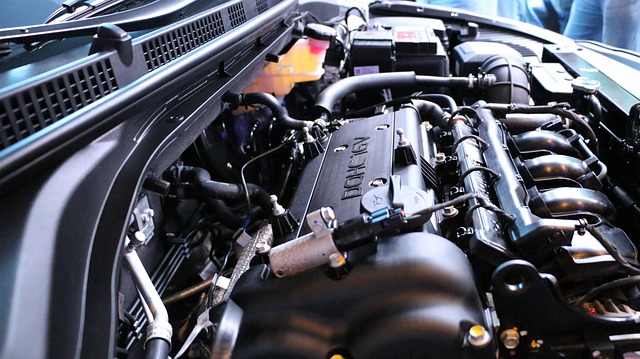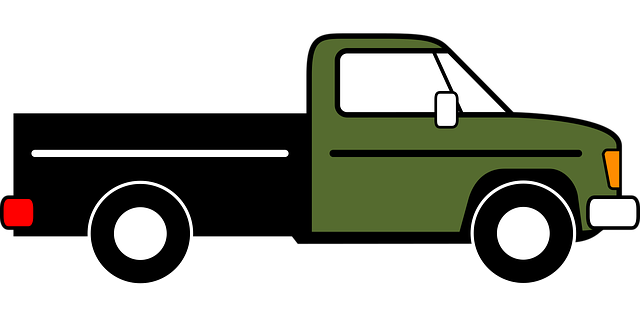Looking to register your car in California? This comprehensive guide breaks down the process step-by-step. From understanding key requirements to securing your unique Vehicle Identification Number (VIN) verification at the DMV, you’ll discover everything needed for a seamless registration experience. Gather essential documents, complete the application, and pay fees – we’ve got you covered with expert tips tailored for California drivers.
- Understand California Car Registration Requirements
- Gather Necessary Documents for Vehicle Registration
- Visit Your Local DMV for VIN Verification
- Complete the Registration Application Process
- Pay Registration Fees and Receive Your Plate
Understand California Car Registration Requirements

Before registering your car in California, it’s crucial to understand the state’s specific requirements. The California Department of Motor Vehicles (DMV) mandates that all vehicles operating within the state be properly registered and have undergone a comprehensive inspection. This process involves verifying the vehicle identification number (VIN) to ensure its authenticity and history. The DMV offers both online and in-person registration options, but for convenience, many Californians opt for mobile VIN inspection services.
A mobile vin verifier or inspector can perform this crucial step by remotely checking the VIN against national databases to gather important information about the vehicle’s past, including any reported accidents, outstanding liens, or recall issues. This digital verification streamlines the registration process, making it faster and more efficient than traditional methods. By ensuring your car meets all these requirements, you’ll be one step closer to legally registering it in the Golden State.
Gather Necessary Documents for Vehicle Registration

Before heading to the California Department of Motor Vehicles (DMV) to register your car, ensure you have all the necessary documents ready. This process is crucial for a smooth and efficient registration experience. You’ll need the vehicle’s title, which proves ownership, along with valid identification like a driver’s license or state-issued ID card. Additionally, a completed Vehicle Registration Application form is essential, which can be obtained from the DMV website.
For a hassle-free transaction, consider using a mobile vin verifier or conducting a mobile vin inspection to verify your vehicle’s information quickly. This step ensures all details match, saving time and potential issues later. Remember to bring along any other required documents specific to your situation, such as proof of insurance and emissions test results.
Visit Your Local DMV for VIN Verification

Before you can register your car in California, you’ll need to ensure it’s compliant with state standards, and one crucial step is getting your Vehicle Identification Number (VIN) verified by your local Department of Motor Vehicles (DMV). This process is essential to prove that your vehicle meets all safety and pollution standards. Visiting your local DMV office for VIN verification is a straightforward procedure. Bring your car along, along with necessary documents like your driver’s license and registration papers.
The DMV will inspect the vehicle to ensure its VIN is accurate and legible, checking it against their records. If you prefer a more convenient approach, some services offer mobile VIN inspection or verification, where an expert can come to you for this specific task. This alternative could save you time and effort, especially if you’re busy or have multiple vehicles to register.
Complete the Registration Application Process

After gathering your necessary documents, it’s time to complete the registration application process with the California Department of Motor Vehicles (DMV). Start by filling out Form DV-140, which is the Application for Title and Registration. This form requires detailed information about your vehicle, including its make, model, year, and unique identifier—the Vehicle Identification Number (VIN). Accurately completing this section ensures a seamless dmv vin verification process.
Ensure you include all relevant details during the VIN inspection to avoid delays. You can conduct this vin inspection yourself or utilize mobile vin verification services provided by trusted applications. These mobile vin verifiers offer convenience, allowing you to confirm your vehicle’s history and specifications from the comfort of your home. This proactive step can streamline the registration process and help ensure your car’s records are accurate.
Pay Registration Fees and Receive Your Plate

After completing your vehicle’s registration application at the DMV, it’s time to pay the registration fees. The cost varies depending on the type and age of your vehicle, so be sure to check the official California DMV website for accurate information. You can typically pay online, by phone, or in person using a debit or credit card. Once your payment is processed, the DMV will issue your vehicle’s license plate. These plates are unique and contain a combination of letters and numbers that identify your car.
Before you receive your plates, a crucial step involves having the DMV perform a VIN (Vehicle Identification Number) verification. This process ensures that your car matches the details on record. For convenience, many people opt for a mobile VIN inspection or use a vin verifier service to streamline this task. The DMV will provide you with a temporary registration while they complete the license plate issuance process, ensuring a smooth transition during which you can legally operate your vehicle on California roads.
Registering a car in California is a straightforward process that requires understanding specific requirements and gathering essential documents. By following these steps, including completing a DMV VIN verification, filling out the registration application, and paying the necessary fees, you’ll have your vehicle registered and ready to hit the road legally. Remember to keep your paperwork up-to-date for seamless future renewals.
